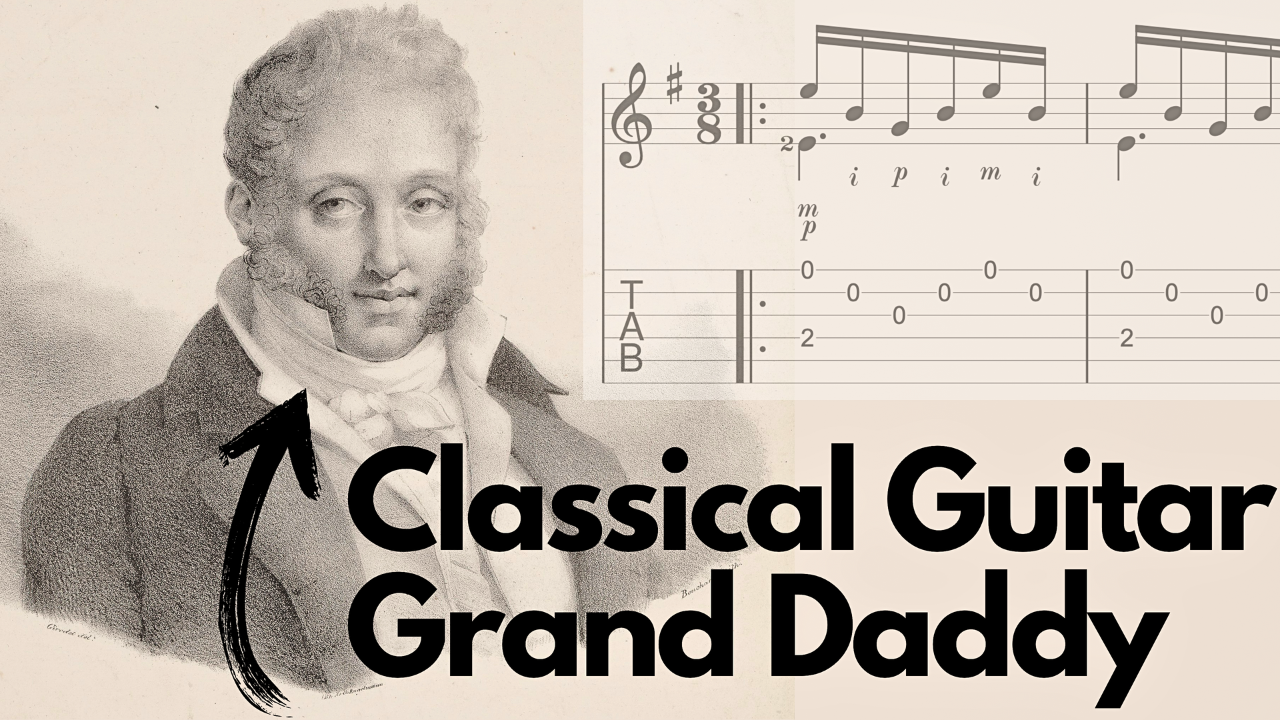
Learning from the "Grand Daddies" of Classical Guitar
Aug 22, 2023Don't Dismiss It Just Because It's "Old"
In the guitar world, we're always looking for the newest thing; some new innovative exercise or drill that somehow couldn't have been conceived of in the supposedly less sophisticated past. However, there truly is "nothing new under the sun" when it comes to the fundamental elements of nylon string or classical guitar playing - after all the human hand hasn't changed and the guitars we play have only gotten easier to play over time. That's why I'd like to encourage you to explore the classical guitar studies of what I call the Grand Daddies of the classical guitar, whose names you more thank likely have heard of: Fernando Carulli, Matteo Carcassi, Fernando Sor, Dionisio Aguado, Mauro Giuliani, among others.
A Song for Every Problem
These composers and guitar educators lived between a century and two centuries ago, but don't let that massive passage of time convince you they don't have anything to teach us. These guitarists were serious, dedicated teachers who worked through just about every technical problem and issue we could have as nylon string guitarists, from left hand finger dexterity to right hand arpeggio variations. (The one thing they seldom addressed was strumming or "rasgueo" but they weren't flamenco guitarists!)
A Waltz to Test the Thumb
Let's look at a beginner classical guitar study by the great Fernando Carulli. This waltz in the key of E minor gets us using our thumb on the G string which is usually reserved for the index finger (although any finger can play any string!). I've noticed over the years that students tend to have their right hand too high (too close to the ceiling, that is) which causes a few problems. This study removes the use of the ring finger and gets our hand lower which is a position we should strive to be in most of the time. Before we start working on the full piece, try to get familar with this arpeggio pattern on open strings first:

Notice we're using our thumb on the 4th string AND the 3rd string - this leaves the ring finger out of the picture (the ring finger is considerably weaker than the other fingers, but don't neglect it, there are tons of great studies meant to give the ring finger a much needed workout!).
Here I walk you through all aspects of this nice little classical guitar study:
The names listed above are the most famous composers of classical guitar studies that guitarists are still benefitting from today. In the 20th century we also have composers like Heitor Villa-Lobos and Leo Brouwer who have contributed to the cannon of classical guitar studies. Check out as many of these studies as you can because there's always something they have to offer and they very often are beautiful pieces of music in their own right. If you'd like to get a taste of some great arpeggio study patterns but some of these maestros, check out my collection of 6 arpeggio patterns from the greats.
FREE TRAINING
Learn the 3 Secrets to Nylon String Mastery With My In-Depth Workshop
In My Free Workshop, You'll Learn:
- The 3 simple secrets that most people don't know about
- The reason why most people fail at playing nylon string guitar correctly
- The 3 most essential techniques that cover over 90% of what we do with the right hand
- My Ultimate Exercise, designed to get you playing as efficiently as possible in only minutes a day
- You'll also get my free 15-page Nylon String Quick Start Guide
We hate SPAM. We will never sell your information, for any reason.


